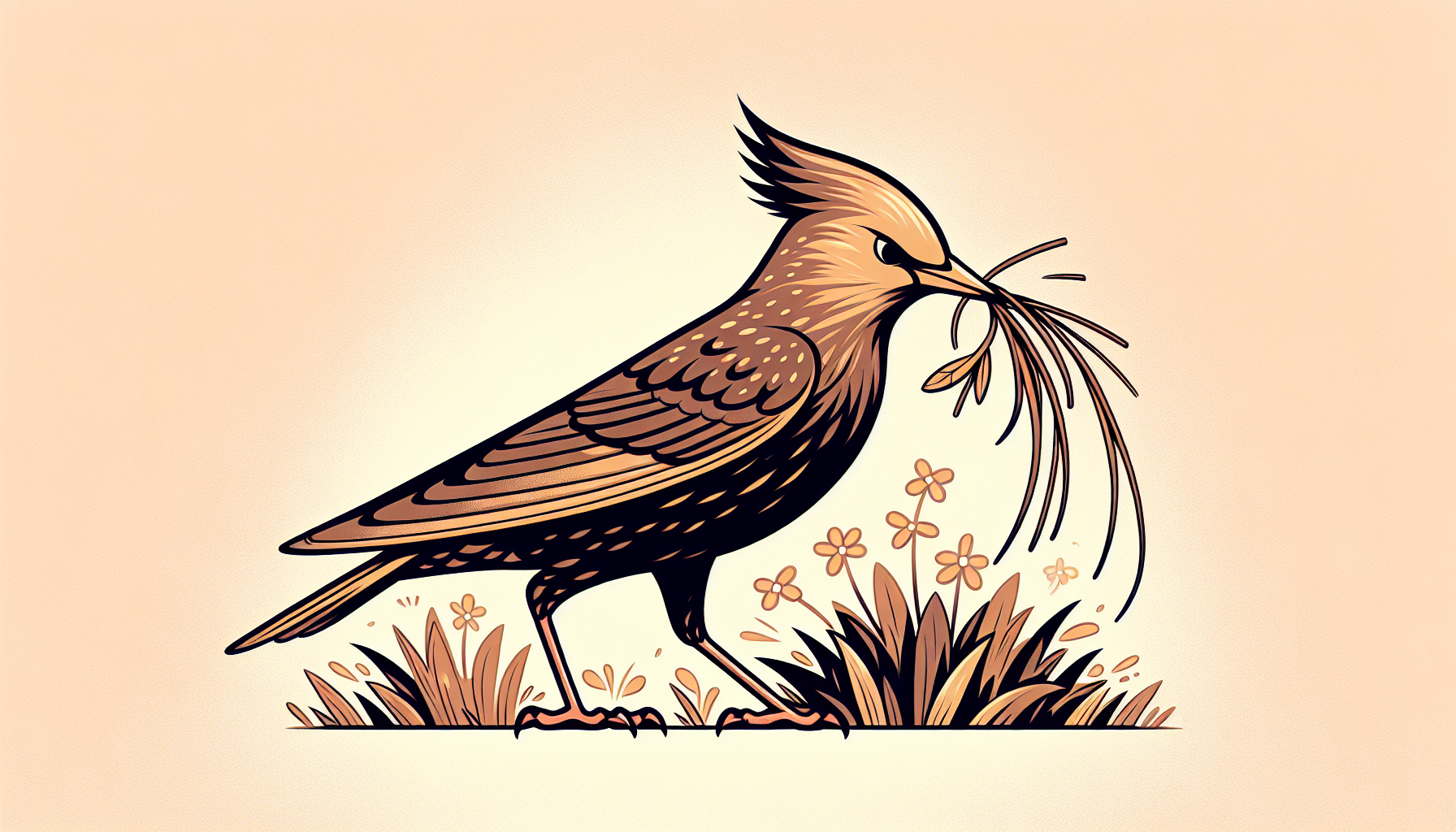
Starling nesting box: How to help starlings build their nests in the garden
The starling is one of the most exciting garden birds in Germany and an adaptable cavity-nesting bird with impressive flocks. In this guide, you will learn how starlings organize their nest building, which nesting material is suitable and how a suitable starling nesting box in the garden or on the balcony can provide useful support. You will receive specific tips on site selection, dimensions and care, information on the legal situation under the Federal Nature Conservation Act and recommendations for WLAN nest box cameras. In this way, you can accompany nest building responsibly, observe the brood without disturbance and at the same time create safe conditions for young birds. With simple measures, a little patience and the right technology, families, nature lovers and senior citizens can experience the vibrant world of birds right on their doorstep - from the first nesting material to the fledging of the young starlings.
When is the starlings' breeding season and how does it affect nest-building behavior?

In Central Europe, the breeding season usually starts in March and lasts until July, depending on the weather a little earlier or later. During this phase, a suitable starling nesting box is accepted particularly early, as males occupy territories and present nesting sites early on.
Signs that the breeding season is beginning
Typical are courtship songs, conspicuous song imitations and courtship flights near caves or nest boxes. You will often see starlings carrying stalks, moss or twigs directly into tree hollows, building recesses or the starling nest box provided.
Particularly active males build so-called decoy nests to attract females. If you keep the site quiet during this phase, the starling nest box will be accepted more reliably and often remain attractive for years.
Different nesting materials that are preferred
Before laying their eggs, starlings collect coarse and fine components for stability and insulation. Twigs, dry grass, leaves, straw, moss, feathers and animal hair often end up in the starling nest box.
Starlings often integrate fresh plant parts such as lavender or chamomile, which presumably reduces germs and parasites. In cities, paper fibers or strings are sometimes used, which you should avoid around the starling nest box for safety reasons.
What materials do starlings use to build their nests?
Natural materials in the shelter
A typical starling nest has a load-bearing outer layer of twigs or coarse straw and a soft inner layer. Dry moss, fine grass, small feathers and clean animal hair are suitable for the starling nest box for warmth and shock absorption.
Lichen, dry leaves and thin brushwood are also popular for stabilizing the shape. Dry, clean quality without mold or odors is important so that the starling nest box remains hygienic and parasites do not find an environment.
- Dry moss and lichen in small tufts
- Animal hair from brush residues, unbleached and clean
- Small feathers as a soft padding layer
- Leaves, fine hay and thin brushwood from the garden
Store the material provided in an airy place, protected from the weather. This will keep the starling nest box free of moisture and unpleasant odors that could deter starlings.
Influences of the environment and availability
Starlings are flexible, but use what is available locally in good quality. They quickly find suitable material in natural corners, near compost or under hedges for the starling nesting box.
There is often a lack of natural fibers in newly built areas, so a small, untidy corner of the garden can help as a source of material. Avoid using synthetic fibers, twine and plastic cords so that young birds do not get caught or tangled in the starling nest box.
How can I help starlings build their nests?
Find suitable nesting sites
As cavity-nesting birds, starlings prefer tree cavities, gaps in buildings and suitable boxes. A starling nesting box with a 45 mm entrance hole, a base area of around 15 × 15 cm and an internal height of around 25 cm is a tried and tested standard.
Mount the box 3 to 6 meters high, protected from the weather and with the front slightly tilted forward. An east to south-east orientation, shade in the midday heat and a clear approach path increase the chances of the starling nest box being occupied quickly.
Set up several boxes with privacy screens and spacing to reduce territorial disputes. A robust, untreated wooden box with a rough inner wall makes it easier for young birds to get out of the starling nest box.
Options for garden and balcony owners
Sturdy anchored boxes can also be used on balconies if distance is maintained from feeding areas and paths. Leave corners of leaves and brushwood and offer some dry moss for the starling nest box to take up.
- Attach nesting boxes securely to trees, walls or balcony railings
- Quiet zones without lawnmowers, leaf blowers or construction work during the breeding season
- Drinking trough and bird bath with flat edge at a safe distance
- Cleaning the starling nest box outside the breeding season, ideally in the fall
Clean with hot water without chemicals and remove old nests. This will keep the starling nest box free of mites and it will be accepted earlier in the next season.
Legal aspects: What do you need to consider when protecting starlings and their nesting sites?
Protection status and legal framework in Germany
Starlings and their nests are protected all year round under Section 44 of the Federal Nature Conservation Act. Disturbing, removing or relocating occupied nests and nesting boxes is prohibited and can be punished with fines.
Plan work on facades, roofs or trees outside the breeding season and check for occupancy in advance. Anyone operating a starling nesting box should respect breeding periods and only check during the rest period.
§Tips for the responsible use of nesting sites
- Only carry out checks and cleaning from August to January
- Ensure a quiet environment and avoid vibrations
- Mark occupied sites and inform other residents
- Contact local nature conservation associations if you are unsure
What technical options are there for observing starlings and their nests?
Selection of cameras for bird watching
WLAN nest box cameras allow live views without opening the box. Compact models with 1080p resolution, infrared night vision, quiet operation and weatherproof construction are suitable for a starling nest box.
Look out for a wide lens for short distances, flicker-free IR LEDs and motion detection. Attach the camera in a low-vibration and cable-proof manner so that the Star nesting box remains free of interference.
Networking and power supply for the technology
For stable streams, 2.4 GHz WLAN often has a greater range than 5 GHz. Repeaters, powerline adapters or an outdoor antenna help to reliably integrate the Star nesting box.
Power supply units, rechargeable batteries or small solar panels are practical. Run cables protected from the weather, with a drip loop and strain relief to prevent moisture ingress. into the starling nest box.
Respect privacy: only point cameras into the box or at the entrance hole and do not record neighboring areas. This allows you to use technology responsibly and monitor the starling nest box in compliance with the GDPR.
Common mistakes when building nests and tips on how to avoid
them Mishaps with materials and site selection
Well-intentioned help can be harmful if artificial fibers, twine or plastic scraps are offered. Only offer natural, clean materials and keep the area around the starling nest box free of string.
Too much sun, constant rain or strong winds often lead to brood abortions. Therefore, choose a sheltered location with shade in the midday heat and a stable mounting for the starling nest box.
- Do not use damp or moldy hay
- No chemicals, fragrances or wood preservatives in the interior
- Keep pets, magpies and martens away by keeping their distance and taking protective measures
What to do if the nest is abandoned?
Not every short absence means abandonment, so wait 7 to 10 days first. In the meantime, avoid disturbances, secure the location and observe the starling nest box inconspicuously.
If it remains permanently empty, clean the box thoroughly with hot water in the fall and check the position. Optimize the height, alignment and freedom of approach so that the starling nest box is better accepted in the next season.
Conclusion: Become part of the starlings' natural habitat
With a suitable location, suitable nesting material and a quiet environment, you can create ideal conditions for the starling nest box. Technology such as WLAN cameras can supplement observation without disturbing the brood if they are installed carefully.
Start now with a well-placed box, some natural material and clear rules for rest periods. Birdwatching - with technology and responsibility - is fun, strengthens the idea of conservation and enriches your garden in the long term.
